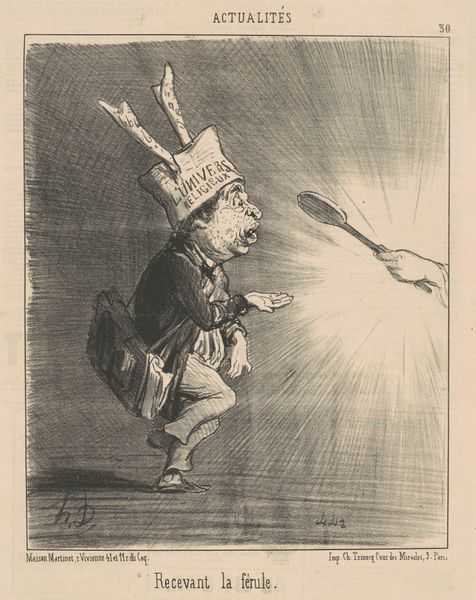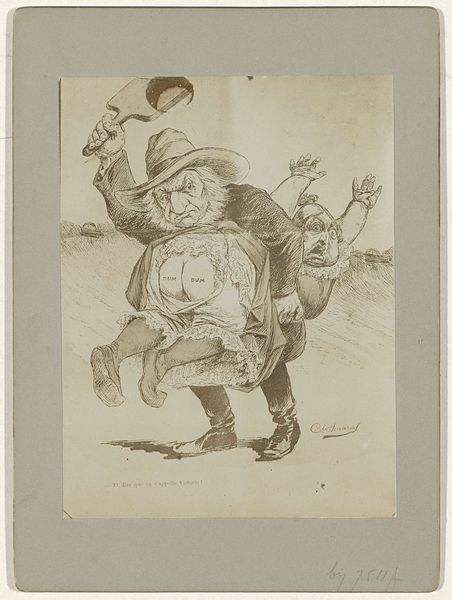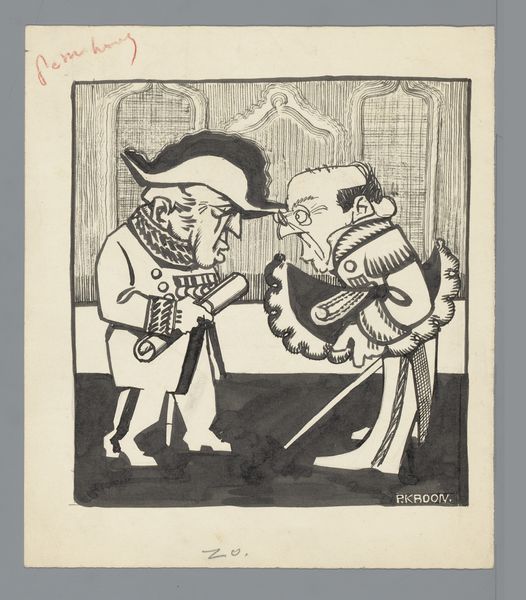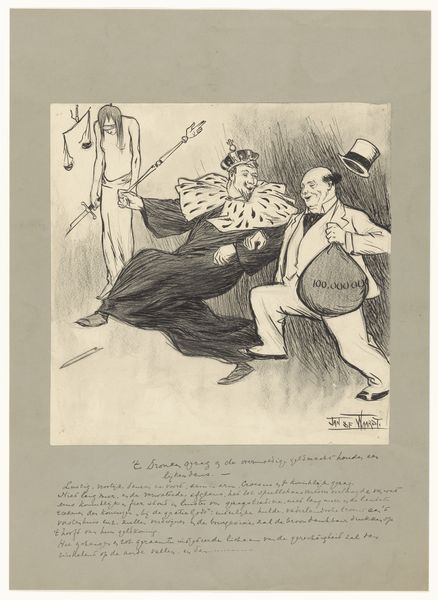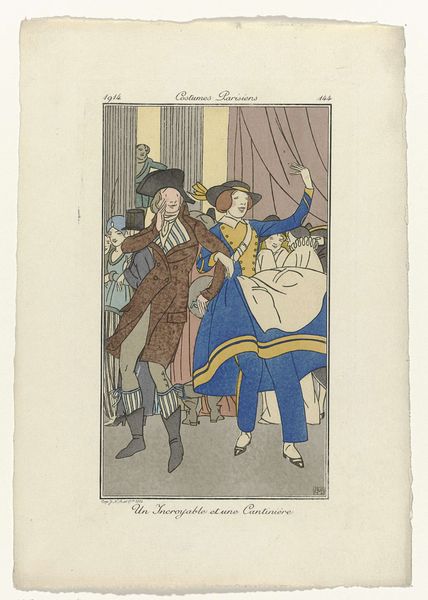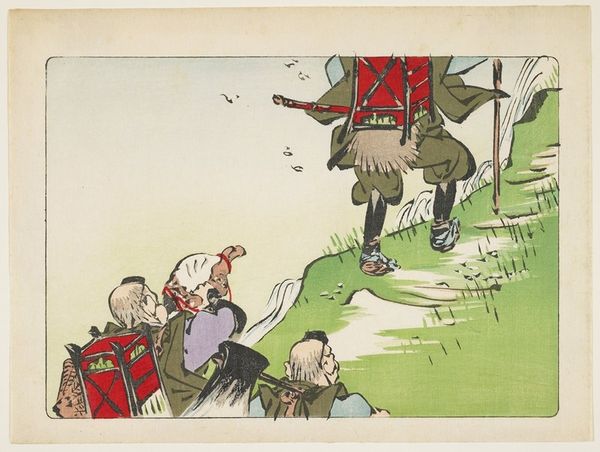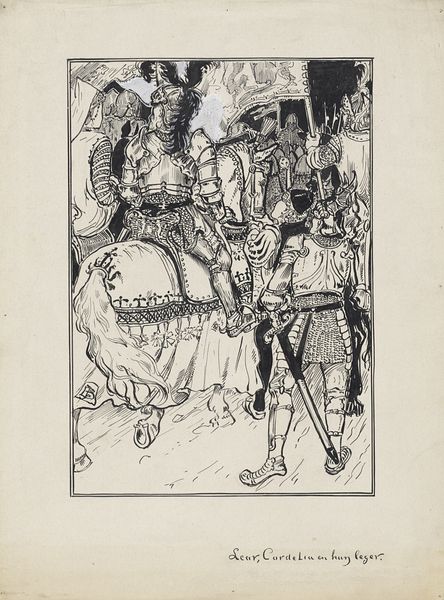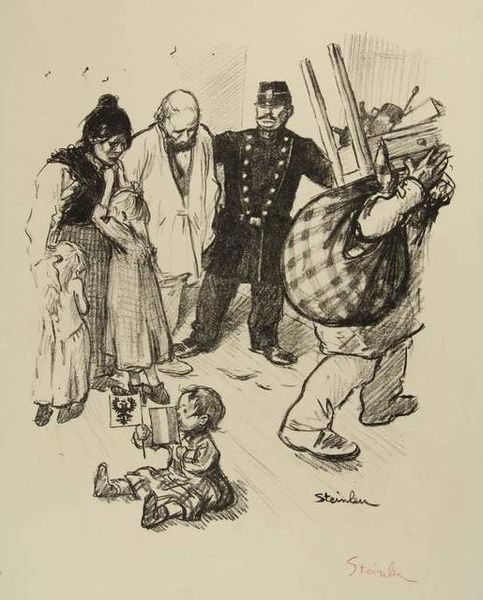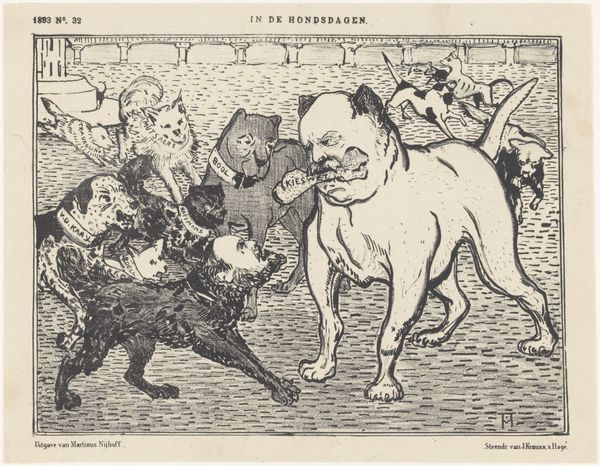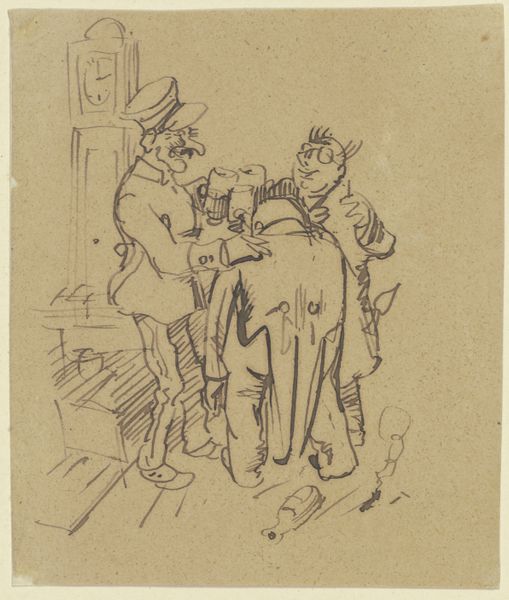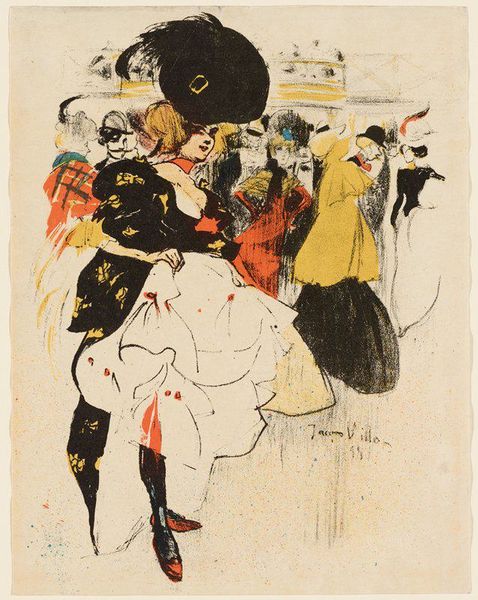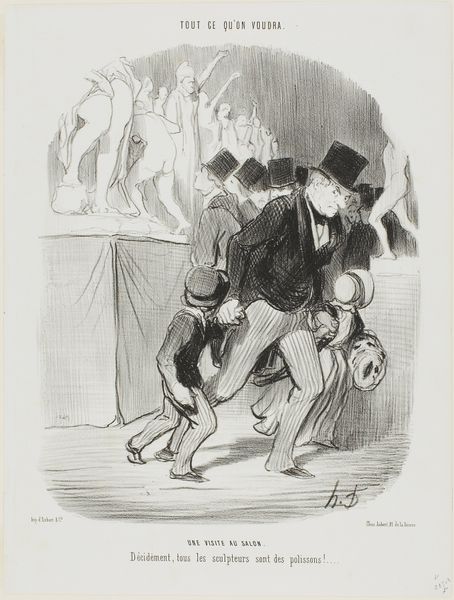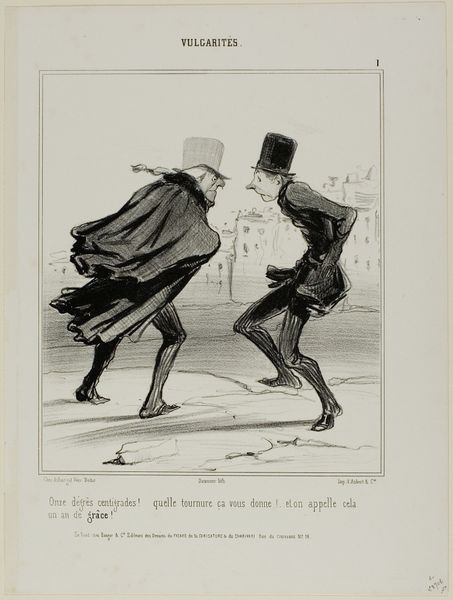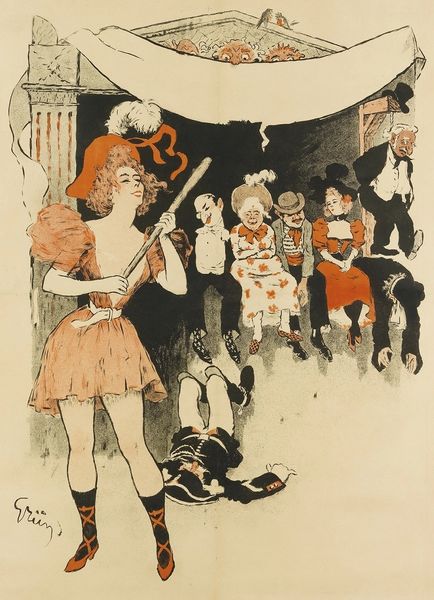
drawing, ink
#
drawing
#
narrative-art
#
figuration
#
ink
#
watercolour illustration
Dimensions: height 336 mm, width 247 mm
Copyright: Rijks Museum: Open Domain
Curator: Willem Wenckebach’s 1898 drawing, done in ink and watercolor, presents quite a scene. The Rijksmuseum holds this intriguing artwork, titled "Notenkraker trekt zijn sabel voor een groep poppen," or, "Nutcracker draws his saber before a group of dolls". Editor: It strikes me as theatrical and slightly unsettling. There's a definite tension with this collection of characters against the dark background, almost like a bizarre carnival. Curator: Consider the societal positionality embedded within Wenckebach's artwork. The nutcracker, an instrument of labor, is repurposed here, presented in a martial stance amidst an unsettling collection of dolls and figures. Is Wenckebach hinting at a world disrupted by the Industrial Revolution or the emergence of child labor? Editor: Indeed! And the toys themselves… Notice how their faces are fixed, frozen in eternal expressions of either amusement or horror. Symbolically, this can’t be accidental. Are these puppets complicit, somehow trapped? Curator: Possibly! The use of traditional toy figures also speaks to inherited narratives, the unquestioning acceptance of certain roles. Even the muted color palette seems deliberate, suggesting a fading innocence perhaps reflective of the shifting colonial project and ideas around childhood and freedom? Editor: And the single soldier drumming away, a backdrop to it all—is that a constant rhythm of obedience or some marching cadence towards this inevitable disruption, the clashing of old hierarchies versus something very…new? Curator: Precisely. It encourages a broader questioning of societal values. Editor: Thinking about how we attach emotions to objects, Wenckebach has made us deeply unnerved by things that typically are assigned positive associations— childhood, innocence, toys, even national stories. Curator: Absolutely. I think engaging with such works lets us see how art acts as a visual challenge to power structures. Editor: Agreed. Looking at "Nutcracker Drawing His Saber" through its iconography allows me to reconsider it—and us, viewers, now—within a narrative larger than entertainment or childhood fantasy.
Comments
No comments
Be the first to comment and join the conversation on the ultimate creative platform.
